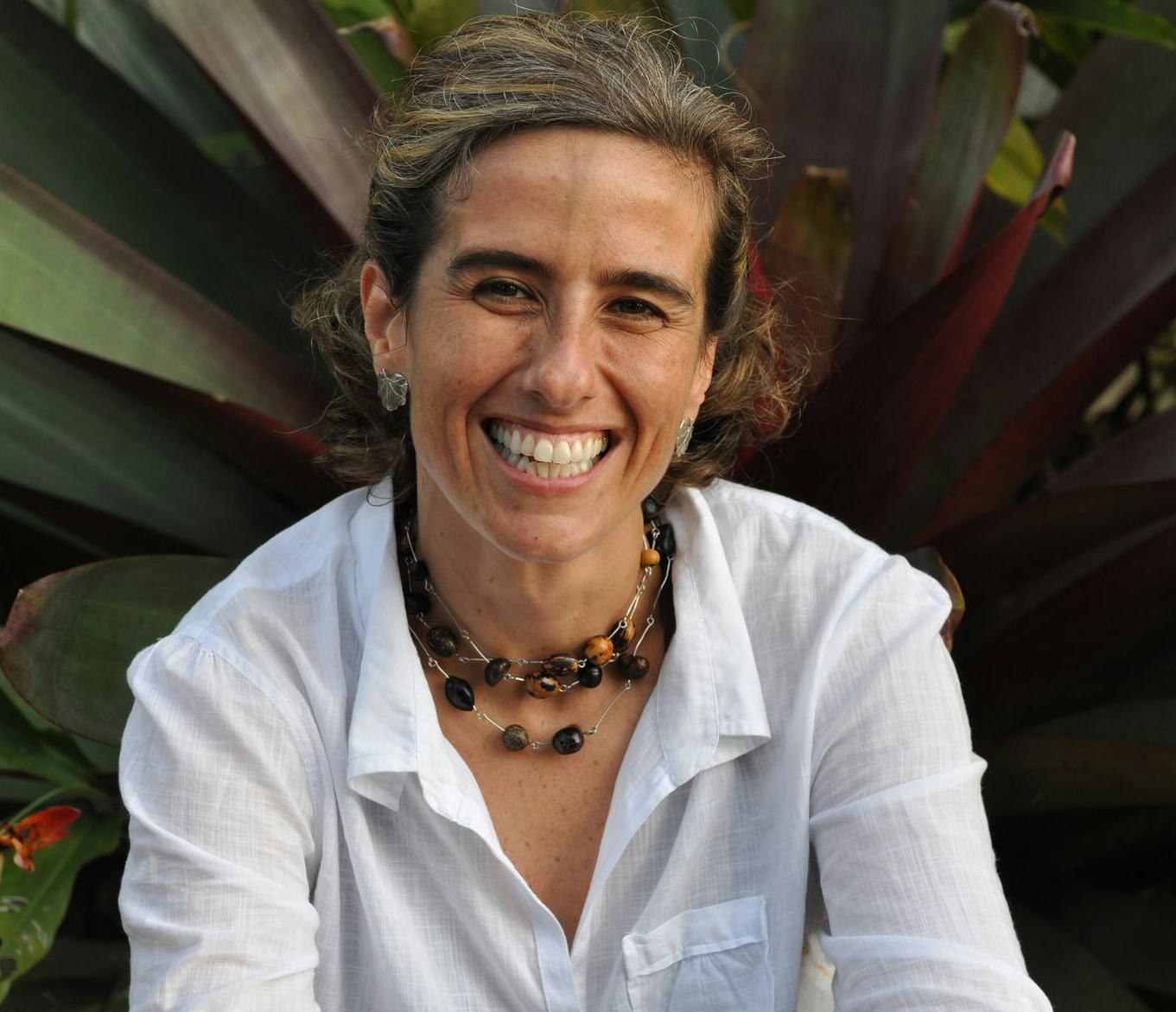Each year a member of our alumni network is selected to receive the Whitley Gold Award, a profile prize worth £60,000 in project funding, awarded in recognition of their outstanding contribution to conservation.
Patrícia Medici co-founded the Brazilian NGO, IPÊ, 26 years ago to conserve threatened wildlife in Brazil. Under this umbrella Patrícia leads the Lowland Tapir Conservation Initiative, focused on the preservation of South America’s largest land mammal, the lowland tapir. With her team, Patrícia conducts cutting-edge research to understand tapir ecology and inform conservation actions in the Atlantic Forest, Pantanal wetlands and Cerrado grasslands biomes.
Nationally Vulnerable, tapirs face a myriad of threats, including habitat loss, poaching and rampant development. Patrícia tackles this head-on, using tapirs as flagships for the protection of their habitat. As Chair of the IUCN SSC Tapir Specialist Group Patrícia is a world expert in the science of tapir conservation and has dedicated her career to shedding light on this unusual looking, yet little-known species. Against a backdrop of political and environmental instability in Brazil, her work is more important than ever. 
A Whitley Award winner in 2008, and a recipient of WFN Continuation Funding in 2011 and 2014, with the support of WFN and other partners, Patrícia and her team have:
- Built the world’s largest and most comprehensive dataset of tapir information based on long term monitoring using GPS telemetry and camera traps.
- Developed, with partners, a National Action Plan for tapir conservation in Brazil.
- Contributed to the designation of the Black Lion Tamarin Ecological Station – a protected site covering 7,000ha and home to tapirs, jaguars and black lion tamarins.
- Informed the restoration of forest corridors in the Atlantic Forest fragmented landscape.
- Worked with stakeholders to prevent wildlife deaths from vehicle collisions and to lobby for changes to agricultural practices that reduce pesticide pollution in the Cerrado.
- Reached thousands through outreach and educational activities, drawing attention to tapirs in a nation where few have heard of these rare animals.
- Trained a cadre of Brazilian conservation leaders, building vital in-country capacity for future conservation.
![]()
With her Whitley Gold Award, Patrícia and her team will expand their initiative to the Amazon rainforest, working across four biomes to conserve Brazil’s lowland tapir. She will:
- Determine the conservation status, risk of extinction and probability of survival of tapirs in the Atlantic Forest, Pantanal, Cerrado and Amazon.
- Develop and implement threat mitigation strategies and conservation action plans for tapirs in each of the four biomes.
- Tackle dangers, including decreasing road-kill accidents, poaching and pesticide pollution in the rapidly developing Cerrado, and logging driven by expanding agriculture in the Amazon.
- Re-assess the Atlantic Forest’s tapirs 10 years on from Patrícia’s original research, to determine population trends over the past decade.
- In the Pantanal, continue to study the resident population using telemetry and camera traps to inform ongoing interventions.
- Spread the word about the plight of tapirs and deliver educational programmes that position tapirs as flagships for habitat conservation.
- Continue training the conservationists of the future, creating a capacity building hub that leaves a lasting legacy.
- Collaborate with fellow Whitley Award alumni on cross-cutting conservation issues and through fieldwork exchanges.
![]()
Top facts:
- 2019 saw record forest loss in the Amazon due to fires and unregulated deforestation, compounded by a lack of government support for environmental policies
- Tapirs are known as living fossils, with the first fossil record of tapirs dating back to the Oligocene, 20 million years ago!
- Did you know? Tapirs are at home in water and can use their specialised nose as a snorkel, making it easier to swim
“Tapirs are known as gardeners of the forest due to the important role they play in shaping and maintaining functioning ecosystems. They are great ambassadors for habitat conservation.” – Patrícia Medici
Follow Patrícia on social media @INCAB.BRASIL, and view more photos of her work here.
Find out more about Patrícia’s past projects, supported by her 2008 Whitley Award and subsequent rounds of Continuation Funding, here.
Image credits: Marina Klink (banner), Joao Marcos Rosa (tapirs), Laurie Hedges (fires, team), Liana John (headshot). Film credits: João Marcos Rosa, Instituto de Pesquisas Ecológicas (IPÊ), Laurie Hedges, The Lowland Tapir Conservation Initiative, TED.





